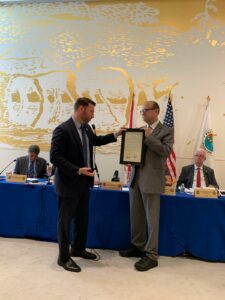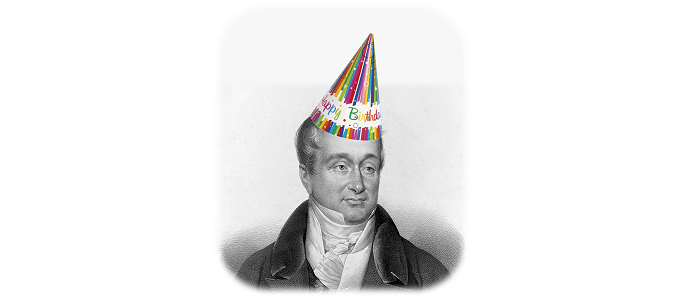Happy Birthday, Dupuytren!
It may not seem that long ago, but Guillaume Dupuytren was born just 242 years ago today on Oct. 5, 1777. Dupuytren disease goes by his name because of the lecture he gave and the surgery he performed for this condition at Hôpital-Dieu in Paris on the 5th of December 1831, just 188 years ago.
It may not seem that long ago in the world of Dupuytren because some things haven’t changed much. Sure, anesthesia was first used 15 years after Dupuytren’s famous operation, so surgery is no longer a tense contest between how fast the surgeon can operate and how much pain the patient can tolerate. And antiseptic technique was first used in surgery 35 years after Dupuytren’s famous operation, lessening the chance that patients would develop surgical infections. And penicillin, the first antibiotic, came into use 100 years after Dupuytren’s famous operation, dramatically lowering the odds that patients would die if they did develop a surgical infection.
So there’s that. Yes, a few things have changed. But the fundamental way we treat Dupuytren hasn’t changed: wait for a bent finger, treat the bend, and repeat.

This will change. One of the big drivers of change is awareness. Dupuytren Research Group is helping raise awareness through many channels including state and federal government. October has been recognized as Dupuytren disease awareness month by the Florida House of Representatives. Earlier this week, Rep David Silver presented the Dupuytren Research Group a formal certificate of this recognition, shown here with Dr. Eaton accepting the certificate.
Another big driver of change is rapid advances in technology. The research that went into the first human whole-genome sequencing – a full map of one person’s DNA – took 13 years and cost 2.3 billion dollars. Today, whole-genome sequencing can be performed in less than a day for a few thousand dollars. Similar breakthroughs are happening for all biologic systems, not just DNA.
What this means is we are in the right place at the right time to make a fundamental change in the way that Dupuytren disease is diagnosed, staged, and treated. The technology to do this either wasn’t available or wasn’t affordable only 10 years ago when the Dupuytren Foundation was first founded. A lot has changed, and more to come.
I fully expect to begin inviting selected International Dupuytren Data bank enrollees to participate in the Dupuytren circulating biomarker pilot study within the next few months – this year. This will set the stage to better understand Dupuytren biology, taking the first steps toward a Dupuytren blood test. The plans for this project solidified only five years ago. It seems like a long time, but it’s not. It’s almost here. So, thanks, birthday boy Guillaume Dupuytren, for giving us a name for this problem disease – because identifying a problem is the first step to correcting it.
Charles Eaton MD






